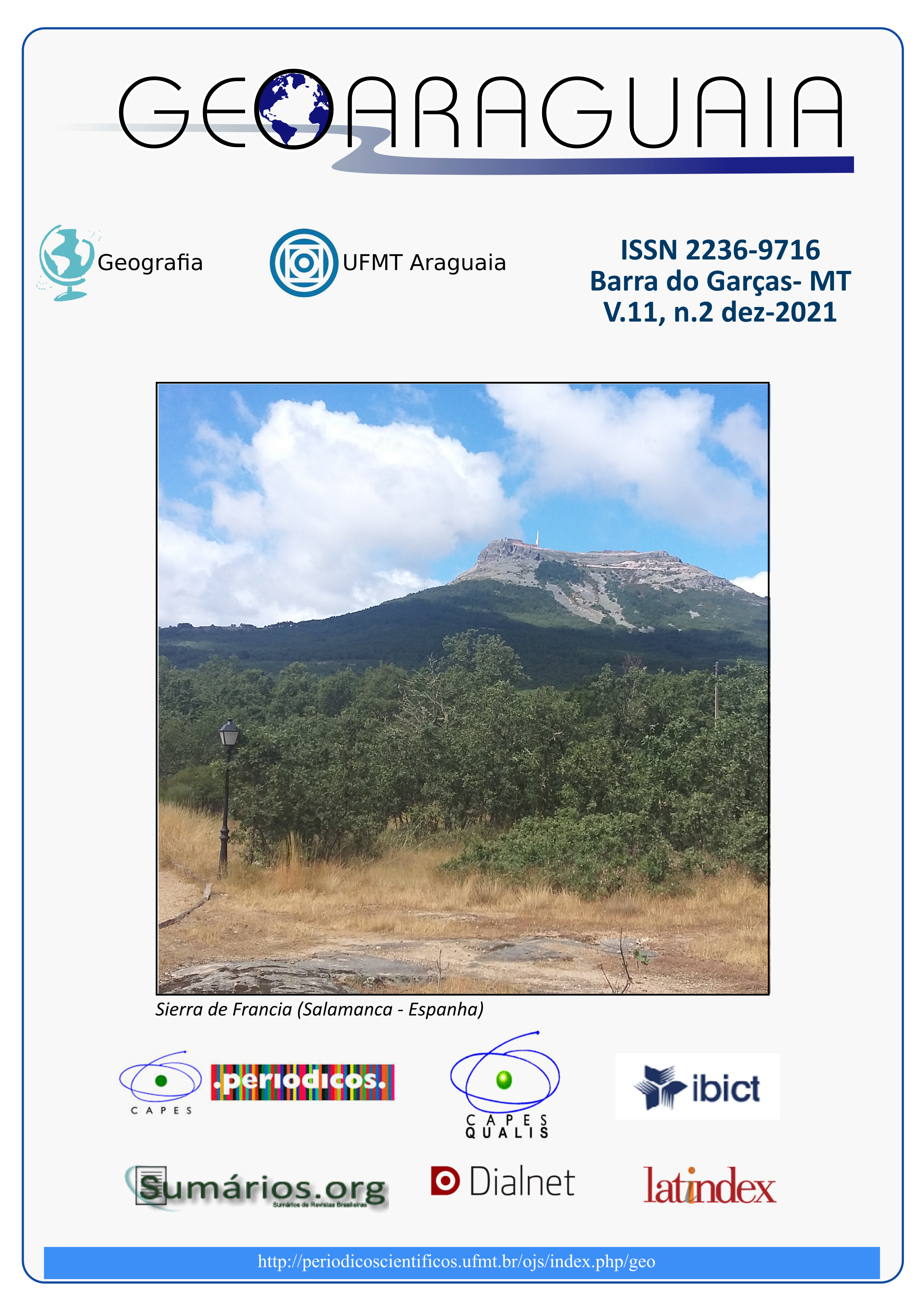Effect of Gravel Filter on Runoff, Sediment Control and Vegetation Enhance in Rainwater Catchment System (Dareh-Morid Basin, Baft)
Palavras-chave:
Neste estudo, filtros de cascalho foram usados para controlar o escoamento e os sedimentos para realçar a vegetação na Bacia de Dareh Morid de Baft, Kerman. Esta pesquisa foi conduzida em um delineamento de blocos completamente casualizado com quatro tratamentos e três repetições. Os tratamentos incluíram o sistema natural como controle, natural sistema com filtro de cascalho, sistema impermeável sem filtro de cascalho e sistema impermeável com filtro de cascalho. O efeito do filtro de cascalho na redução de sedimentos e aumento da vegetação foi medido em profundidades de 25, 50 e 75 cm usando dispositivo TDR após cada chuva. Os resultados deste estudo revelaram que em todas as três profundidades mencionadas no sistema impermeável com filtro de cascalho, o a umidade foi significativamente mais alta do que em outros tratamentos. O desempenho do filtro de cascalho junto com a impermeabilização da superfície do sistema reduziu a erosão de sedimentos e aumentou a vegetação. Com isso, pode-se afirmar que a captação de águas pluviais por meio de superfícies impermeáveis com filtro de cascalho será uma boa solução para o controle do escoamento mais sedimento e uma contribuição significativa para o abastecimento de água de plantas em regiões áridas e semi-áridas.Resumo
In this study gravel filter were used to control runoff and sediment to enhance vegetation in Dareh Morid Basin of Baft, Kerman.This research was conducted in a completely randomized block design with four treatments and three replications.Treatments included natural system as a control, natural system with gravel filter, im permeable system without gravel filter, and impermeable system with gravel filter. The effect of gravel filter on reducing sediment and increasing vegetation was measured at depths of 25, 50 and 75 cm using TDR device after each rainfall.The results of this study revealed that at all three mentioned depths in the impermeable system with gravel filter, the moisture was significantly higher than in other treatments.The performance of the gravel filter along with making the system surface impermeable reduced sediment erosion and increased vegetation. As a result, it can be claimed that the rainwater harvesting through impermeable surfaces using gravel filter will be a good solution to control runoff plus sediment and a significant contribution to the water supply of plants in arid and semi-arid regions.
Referências
AKHTAR, A. A.; YAZAR, A. A.; ATEF, T.; HAYEK, P. Micro-catchment water harvesting potential of an arid environment. Agricultural Water Management, 98, 2010. p. 96– 104.
FRINGS, R.; HILLEBRAND, G.; GEHRES, N.; BANHOLD, K.; SCHRIEVER, S.; HOFFMANN, T. From source to mouth: Basin-scale morphodynamics of the Rhine River. Earth-science reviews, 196, 2019. p. 102-830.
GARDI, C.; SCONOSCIUTO, F. Evaluation of carbon stock variation in Northern Italian soils over the last 70 years. Sustainability Science, 2, 2007. p. 237-243.
GHADERI, N. Optimization of water catchments systems with increase moisture retention in the soil profile in Kordestan. Annual Report, Iran (in Persian), 2004.
HUANG, Z. B.; SHAN, L.; GAO, L. E.; YANG, X. M., BEN-HUR, M. Artificial rainwater harvesting system and the using for agriculture on loess plateau of China. 12th ISCO Conference. 7 pages, Beijing, China, 2002.
SHAHINI, G. Basin-level optimization systems by increasing moisture retention in soil profiles in the Golestan provice. Final Report of Soil Conservation and Watershed Management Research Institute, 68, 2003.
LAL, R. World Cropland soils as source of sink for atmospheric carbon, Adv. Agron. 71, 2001. p. 145-191.
MILKIAS, A.; TADESSE, T.; ZELEKE, H. Evaluating the effects of in-situ rainwater harvesting techniques on soil moisture conservation and grain yield of maize (Zea mays L.) in Fedis district, Eastern Hararghe. Ethiopia. Turkish Journal of Agriculture-Food Science and Technology, 6, 2018. p. 1129-1133.
MUSYOKI, J.; MUNYAO, D. Tree planting and management techniques under limitedwater availability, Guideline for Farmers and Extension Agents, Kenya Forestry Research Institute, 2014.
PIJL, A.; REUTER, L. E.; QUARELLA, E.; VOGEL, T. A.; TAROLLI, P. GIS-based soil erosion modelling under various steep-slope vineyard practices. Catena, 193, 2020, p. 104-604.
YAZAR, A.; KUZUCU, M.; CELIK, I.; SEZEN, S. M.; JACOBSEN, S. E. water Harvesting for Improved Water Productivity in Dry Environments of the Mediterranean Region Case study: Pistachio in Turkey. Journal of Agronomy and Crop Science, 200, 2014.
ZHANG, Z.; SHENG, L.; YANG, J.; CHEN, X-A.; KONG, L.; WAGAN, B. Effects of land use and slope gradient on soil erosion in a red soil hilly watershed of southern China. Sustainability, 7, 2015. p. 14309-14325.
Downloads
Publicado
Edição
Seção
Como Citar
Licença
A Revista Geoaraguaia poderá solicitar alterações de ordem normativa, ortográfica e gramatical, com vistas a manter o padrão culto da língua. Se necessário, alguns ajustes normativos podem ser feitos pela revista, porém respeitando o estilo dos autores.
As provas finais não serão enviadas aos autores.
As opiniões emitidas pelos autores dos artigos são de sua exclusiva responsabilidade.





 A revista
A revista